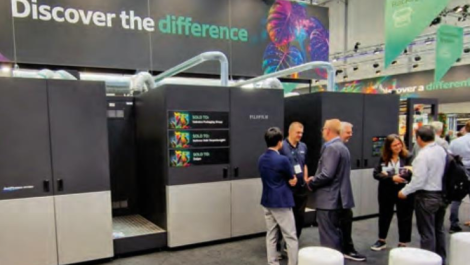Handling high numbers of low value jobs puts a heavy burden on administration, requiring high levels of automation to eliminate delays and potential errors, while keeping costs under control. A well implemented management information system is an important function of a label business, critical in the case of digital labels.
While visiting label converters I am impressed by the variety of management information systems (MIS) that are in use. Many small companies have bespoke systems, often written in-house, that combine estimating and order entry and provide job tracking and links to invoicing. A problem with these in-house solutions is they are typically dependent on an individual, and they are very difficult to scale up as the business grows or additional equipment is added. They handle specific tasks well, but are not well suited to add functionality, for example in handling web to print or linking in to pre-press and workflow systems that can provide excellent efficiencies.
Modular systems
Many MIS suppliers provide modular solutions for all types of print and label businesses. Label specialists include Labeltraxx and Cerm, with EFI and Shuttleworth establishing a user base.
The latest Labeltraxx system has significantly improved its connectivity to digital presses, enabling the job information and artwork files to be sent directly to the digital press via the MIS system. There is a web to print system that can be integrated and a new feature is the visual scheduling module that enables managers to schedule their production in much the same way as the old boards that relied on moving T-cards about.
‘MIS integration makes more data available internally and externally, saves time, and there are fewer mistakes.’
Shuttleworth has launched version 5.1 of its system, incorporating Business Intelligence. The latest version provides help in driving efficiencies with innovative tools including enhanced dashboards, specific KPIs and user definable reporting with executive analysis and a new set of mobile Apps. One customer is Leicester based Label Apeel. Claire Gibbons is business support manager and she explained: ‘We have been using Shuttleworth for some six years, and printing digitally (an HP Indigo WS6000 with ABG Digicon finishing featuring hot foiling, embossing, flexo and screen print/coating and die cutting) for the last two. The Shuttleworth system was easy to amend when we added digital, taking the standard job details and making digital versions. New features were added (foiling, embossing) and job cards easily formatted with many of the standard flexo details such as material and cutter guides.’ In the pipeline is a plan to integrate the Esko pre-press system to manage the artwork. It is ‘brilliant at handling CRM’, with good reporting and Label Apeel uses the end to end system to manage all aspects of production from enquiry to delivery.
In 2011 Heidelberg bought Belgian MIS provider Cerm. This was partly to develop the MIS for the LinoPrint digital presses, but it still supplies customers using other equipment. It offers estimating, job processing, products catalogue, shipping and invoicing, works schedule, raw material management, job costing and shop floor data collection.
W&R Ettingen in Tilburg, the Netherlands, has a Cerm system linked to its Esko system to drive its flexo and Xeikon presses. Before integration the MIS and pre-press operated independently and required many duplicated manual tasks for each order. The integration was accomplished through JDF and JMF standards. At enquiry stage Cerm sends all job specifications to the Esko system, which returns information that allows Ettingen to execute orders more quickly. For some repeat orders, operator time required falls to just a few minutes. Time is also saved in automating the approval process. When a customer approves a PDF the workflow automatically outputs the press ready file to the digital press. The integration makes more data available internally and externally, and there are fewer mistakes. It has also helped new business opportunities through the web tools to place enquiries, upload artwork, approve proofs and obtain information on stock and job status in real time online.
Growing market share
EFI globally is the market leader in MIS for print. It is buying up many providers and growing market share globally – in November it bought Technique in the UK. In labels and packaging it offers Radius, and this is being integrated with the Fiery front end to provide efficiencies in controlling workflow for its Jetrion presses. One customer is US converter Whitlam Label, based in Center Line, Michigan with other facilities around the world.
Whitlam worked closely with the EFI team and enjoyed a smooth and on schedule implementation. It has a Jetrion 4830 UV inkjet system with Fiery RIP. Alex Elezaj, COO at Whitlam Label commented: ‘So far, the system has been excellent and we know it is the right solution. EFI Radius fits the complexity of our work and serves as the platform for our continued growth in the future. We are confident in EFI’s strength and its ability to continue to invest moving forward.’
I always think of MIS as the ‘Bran Flakes’ of print production. While not particularly exciting or appetising, it is a hugely important to the regular operation of a converter. The systems enable the efficient processing of jobs from initial customer contact through to delivery.
In digital production processing orders can become a bottleneck as can handling the necessary pre-press operations to ensure colour quality is maintained and the correct finishing is applied to each order. The latest systems are able to integrate with production, and allow greater interaction with customers. Digitising the administration offers cost reduction and the goal true end to end connectivity drives major efficiencies, improving service levels and opening new routes to market.






